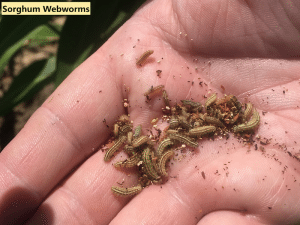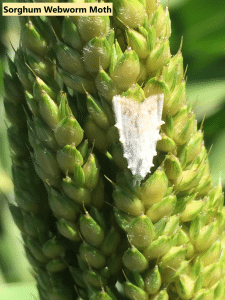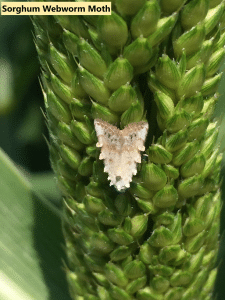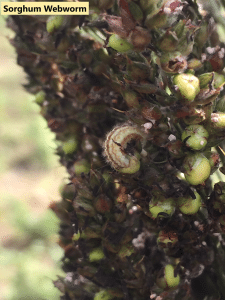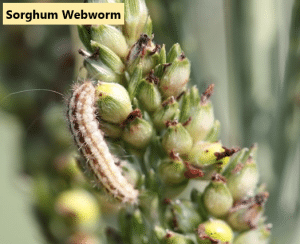Management options
| Insecticide (Trade Names) for SORGHUM WEBWORM | Lb Active Ingredient per Acre | Amount Formulation per Acre | Performance Rating |
|---|---|---|---|
| carbaryl (Sevin 80S) | 1 - 2 | 1.25 - 2.5 lb | 7 |
| carbaryl (Sevin XLR 4) | 0.5 - 1 | 16 - 32 oz | 7 |
| chlorantraniliprole (Vantacor 5 SC) | 0.047 - 0.067 | 1.2 - 1.71 oz | 9 |
| chlorantraniliprole, λ-cyhalothrin (Besiege) | See label | 6 - 10 oz | 9 |
| methomyl (Lannate LV 2.4) | 0.45 | 24 oz | 7 |
| spinosad (Blackhawk 36% WDG) | 0.038 - 0.074 | 1.7 - 3.3 oz | 9 |
- Planting early, before mid-May, may help avoid some damage from sorghum webworm.
- Resistance to pyrethroid insecticides is well documented and has been observed in Tennessee. Use of alternative chemistries is generally suggested.
